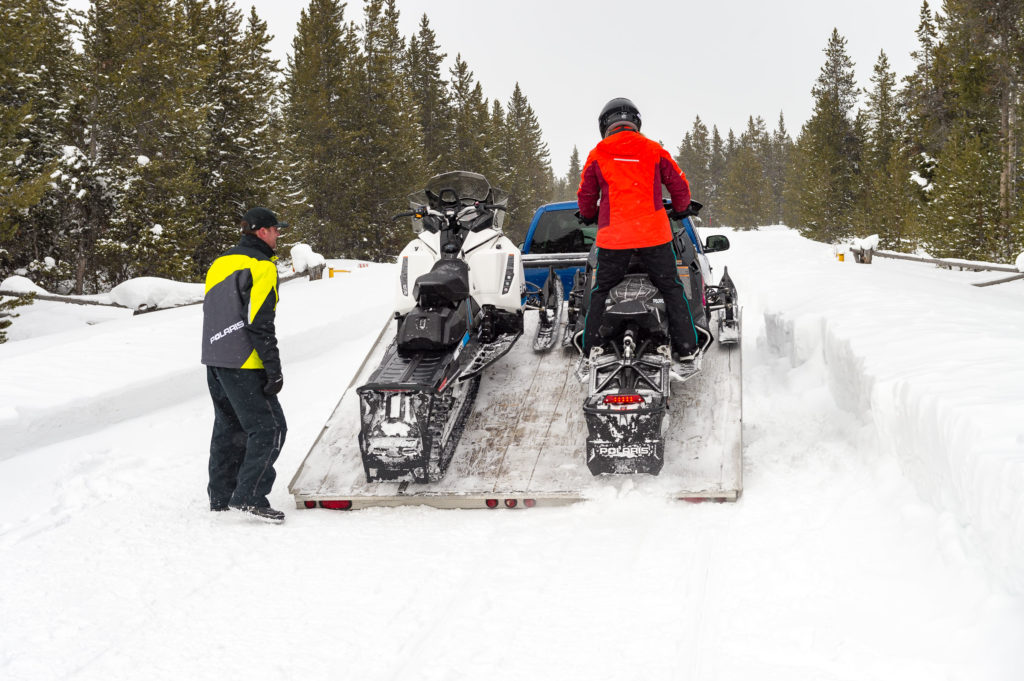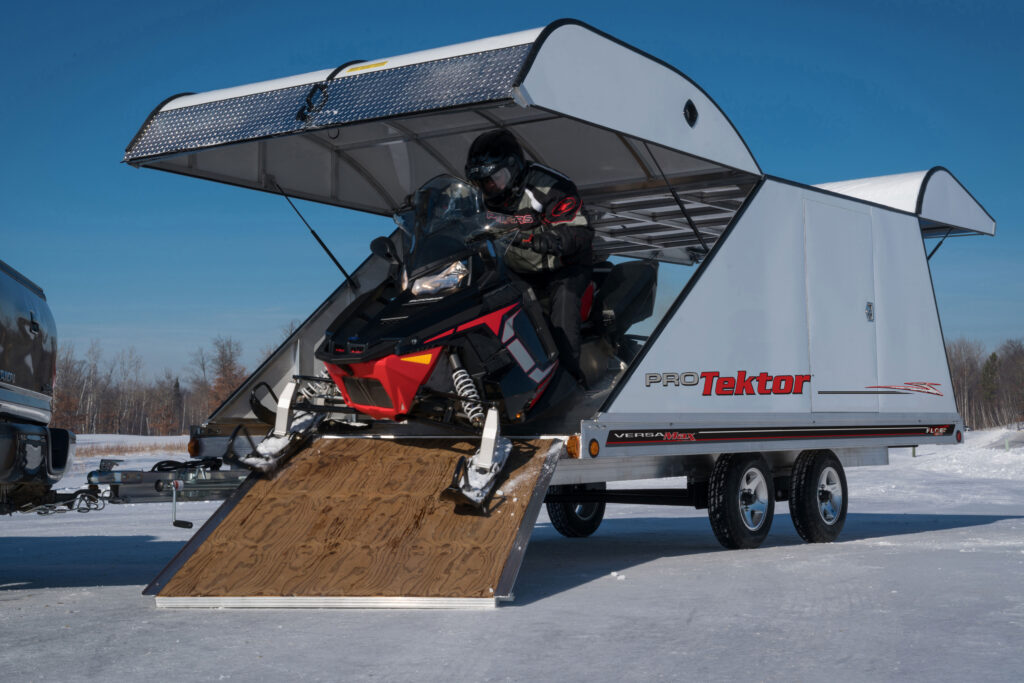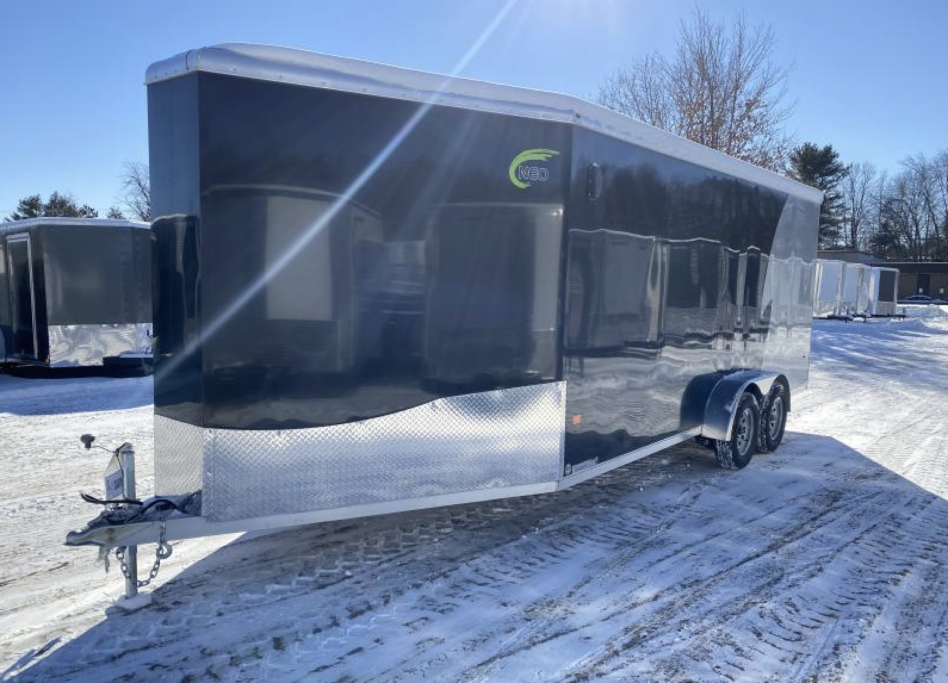How to choose the best snowmobile trailer for you
Maddy Scheinost2023-11-16T00:15:35-06:00


What you should know before choosing a snowmobile trailer
There are several considerations that will help you choose the best snowmobile trailer for your needs, starting with how much and how far you expect to be traveling. Lately it seems the search the best places to go snowmobiling has altered travel patterns for snowmobilers who won’t hesitate to spend hours on the road to satisfy their quest for unparalleled snowmobile adventures, rather than just hitting the snowmobile trails in the backyard.
Selecting the best snowmobile trailer can be nearly as big a challenge as choosing the best snowmobile since there are tons of options out there. A Triton snowmobile trailer, a Snow Pro snowmobile trailer, an Aluma snowmobile trailer or a Blizzard snowmobile trailer are all popular brand options, but before making your choice, you’ll want to determine the answers to a few questions. How much do you want to spend on a snowmobile trailer? What’s your best guess as to how often you’ll be using it, and how far might you be traveling…twice a year to the dealer for maintenance and storage or on trips to the best snowmobile trails in the nation? How many sleds will you be carrying, or will a single snowmobile trailer suffice? And of course, how big a snowmobile trailer do you need in terms of length, width and maximum carry weight capacity to carry your snowmobile(s) safely?
Snowmobile Trailer Capacity
Each trailer has been constructed to haul a specified number of snowmobiles. Some are suitable for a single snowmobile, and others are designed to carry up to four. For most average riders, a snowmobile trailer that can handle one or two is sufficient, while snowmobile racers may want a larger capacity. This consideration includes not only sufficient length and width to accommodate your snowmobiles, but also weight. Figuring 600 lbs. per snowmobile should be sufficient to cover not only the sled itself, but also fuel and accessories.
Along with the maximum trailer capacity weight, you’ll want to consider such things as tongue weight (the weight your trailer is exerting on your hitch – your hitch will have a maximum tongue weight), axle rating (the largest influencer on the total load carrying capability of your trailer because regardless of your trailer’s weight rating, you don’t want to exceed the axle weighting rate), and hauling capacity related to your vehicle as determined by the Gross Combination Weight Rating (GCWR – the maximum weight of the tow vehicle and trailer combination), and the Gross Vehicle Weight Rating (GVWR – the maximum weight of the tow vehicle and trailer combination, including the weight of the driver, passengers, fuel, and cargo in the tow vehicle).
Snowmobile Trailer Styles
In a broad sense, there are two types of snowmobile trailer: an open snowmobile trailer and a closed snowmobile trailer. Open snowmobile trailers are generally more budget-friendly and lighter weight and therefore easier to tow. They can have a tilt design, which allows you to drive your sled on and pull it off, a tilt with ramp off, which allows you to drive on then drive off the front by repositioning the common ramp, or a drive on/drive off design which allows you to drive on and off using ramps on both ends. Since they don’t have walls or a roof, with an open trailer, you’ll likely want to protect your sleds with covers to keep out snow, rain and dirt.
With an enclosed trailer, which obviously supplies more complete protection, the doors on both ends form the ramps. An enclosed trailer provides you with space for cargo, and also offers you a way to store your vehicle when it’s not in use. Enclosed trailers are heavier and tend to be more expensive. A V-nose design is generally more aerodynamic in use than a flat front design, typically offers more room and can make loading and unloading easier. Or you can add an after-market enclosure to nearly any open trailer to turn your open snowmobile trailer into an enclosed trailer.
Your Snowmobile Trailer’s Deck Height
You’ll also have your choice of deck heights. A lower deck is easier to load because the ramp incline is less steep, and it’s easier to tow thanks to improved aerodynamics. But a higher deck height affords more clearance, which you may need if you’re traveling backcountry or heavily snow-laden roads.
Steel vs. Aluminum Snowmobile Trailers
In general, steel trailers are considered more durable and versatile especially if you intend to use your trailer to haul something other than your snowmobiles. They also tend to be a bit cheaper, but they’re heavier, which can decrease your fuel efficiency, and they will require more maintenance, since they have a tendency to rust. An aluminum snowmobile trailer is lighter and easier to pull, plus aluminum won’t rust and is less vulnerable to weathering and mechanical road chip damage…but it tends to be less durable.
Snowmobile Trailer Tires
Your snowmobile trailer will likely come with snowmobile trailer tires. But, in the event you buy a used trailer with older tires, or you decide you want to upgrade either with a larger size, a different tread design or radial tires instead of bias ply, or when you just need to get new tires, here are a few things for you to consider.
You may want to install larger tires on your snowmobile trailer, especially if you’ll be traveling longer distances because generally, larger tires have a larger weight rating and provide a smoother ride, plus they dissipate heat better at highway speeds, and are therefore less likely to degrade and blow. You can add larger tires, and larger wheels, as long as you have enough room, from the top of the tire to the fender and from the inside wall of the tire to the trailer wall/frame, to accommodate the larger size.
Bias ply tires can carry more weight for longer periods of time, but they tend to give in to more irregular wear. Radial tires provide a smoother ride and are better suited for highway driving.
In any event, you don’t want to head out on any trip with tires that are worn, or carrying a load that is higher than the carrying capacity of your tires. If you do, you put yourself at risk.
No surprise, since we’re very proud of our brand, we recommend using RubberMaster Trailer Tires. But there are several good reasons for that. RubberMaster Tires are high performance, long-lasting tires that will get you safely where you’re going. We make them that way. They’re designed to provide heavy-duty durability you can count on, with computer-designed tread patterns that ensure long life on all roads, in any weather conditions. They’re manufactured with strict tolerances from top rubber compounds, they’re triple-tested for quality before being X-rayed to be sure they’re perfect, then we cover them with our Ultimate Advantage Lifetime Warranty. Here at Treadworld, we’re all about providing you with the reliability you want. And we’re here to help you choose the best fit for your trailer from our wide selection. Don’t hesitate to contact our tire experts via live chat or email with any questions you may have.
